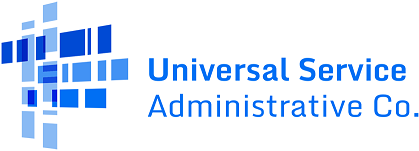Safety Valve Support
Safety Valve Support (SVS) is a sub-component of High Cost Loop (HCL) support available to rural price-cap and rate-of-return incumbent carriers and competitive carriers providing service in the areas of these rural companies, which must be designated as eligible telecommunications carriers (ETCs) by their state commissions or the Federal Communications Commission (FCC).
SVS is additional support above the HCL cap that is available to rural carriers that acquire high-cost exchanges and make substantial post-transaction investments to enhance network infrastructure.
First, establish an index year.
The index year is defined in one of two ways:
- For carriers that buy or acquire exchanges on or after Jan. 10, 2005, the index year expense adjustment for the acquiring carrier’s first year of operation can be based on the selling carrier’s loop-related expense adjustment for the 12-month period prior to the transfer of exchanges. The index year expense adjustment for years after the first year of operation shall be determined using cost data from the first year of operation.
- For carriers that buy or acquire exchanges prior to Jan. 10, 2005, the index year expense adjustment for the acquiring carrier is based on the loop-related expense adjustment for the first year that the acquiring company operates the acquired exchanges. Carriers that buy or acquire exchanges prior to Jan. 10, 2005, may petition the FCC to use the selling carrier’s loop-related expense adjustment as stated above.
Note that the establishment of a rural carrier’s index year depends on when that carrier submits cost data to NECA under Part 36 of the FCC’s rules. Specifically:
- If a carrier submits annual data pursuant to Section 36.611 of the FCC’s rules, the index year starts at the beginning of the next calendar year after the transfer; or
- If a carrier submits updated quarterly data pursuant to Section 36.612 of the FCC’s rules, the index year starts at the beginning of the next quarter after the transfer.
Next, calculate Safety Valve Support.
SVS is based on the difference between an acquiring carrier’s expense adjustment at the end of its index year and subsequent year expense adjustments. Specifically, SVS is 50 percent of the difference between the index year HCL support amount and the HCL support amount in subsequent years. SVS is subject to an overall cap of no more than five percent of the rural HCL fund in any given year.
Additional Details
Limitations on Amounts of SVS:
Under no circumstances will a rural carrier’s acquired exchanges receive more through the transfer of support and the safety valve mechanism than it would receive in uncapped HCL support. That is, a study area’s SVS loop cost expense adjustment cannot exceed the difference between the acquired exchanges’ uncapped annual study area loop cost expense adjustment calculated pursuant to Section 36.631 of the FCC’s rules and transferred support amounts available under Part 54, Section 54.305(a) of the FCC’s rules.
- HCL support:
SVS is only available to rural carriers that would otherwise qualify for HCL support for the acquired exchanges under Section 36.631 of the FCC’s rules. - SVS vs. Safety Net Additive support:
Acquiring carriers shall not be permitted to qualify for both SVS and Safety Net Additive (SNA) support for the same exchanges. That is, SNA support is not available for acquired exchanges, as it applies to new investments in existing exchanges, while SVS applies to new investment in acquired exchanges. - Subsequent transfer of exchanges:
Neither SVS nor SNA support transfers with acquired exchanges. The subsequent acquiring rural carrier will have an opportunity to qualify for SVS based on its own costs for the acquired exchanges. - Portability of SVS:
SVS is available to competitive ETCs on the same per-line basis as it is available to rural incumbent carriers. That is, per-loop equivalents of SVS are portable to competitive ETCs. - Retroactive application of SVS:
SVS is not retroactive. It is available, however, on a going-forward basis for new investment in acquired exchanges by rural carriers currently operating such acquired exchanges.
Reporting Requirements
When making their annual cost, investment, expense, and line count data submissions each July 31, rural carriers acquiring exchanges and incorporating them into existing study areas must exclude the costs associated with the acquired exchanges from the costs associated with the pre-acquisition study areas. That is, acquiring rural carriers must separately provide the cost data for both acquired and existing exchanges, as if these two categories of exchanges constituted separate study areas.
Written Notification to USAC
Once relevant regulatory approvals are obtained and the transaction is closed, rural carriers must provide written notice to USAC that they have acquired lines that may be eligible for support. Rural carriers must also provide written notice to USAC of when their index year has been established for purposes of determining eligibility.
Mail to:
Universal Service Administrative Co.
Attn: Vice President, High Cost Program
700 12th Street, NW
Suite 900
Washington, DC 20005
